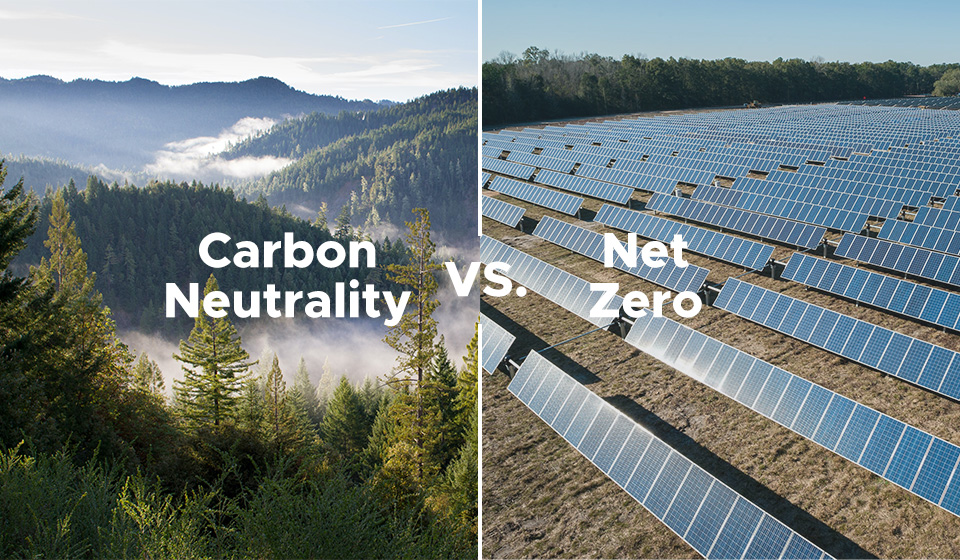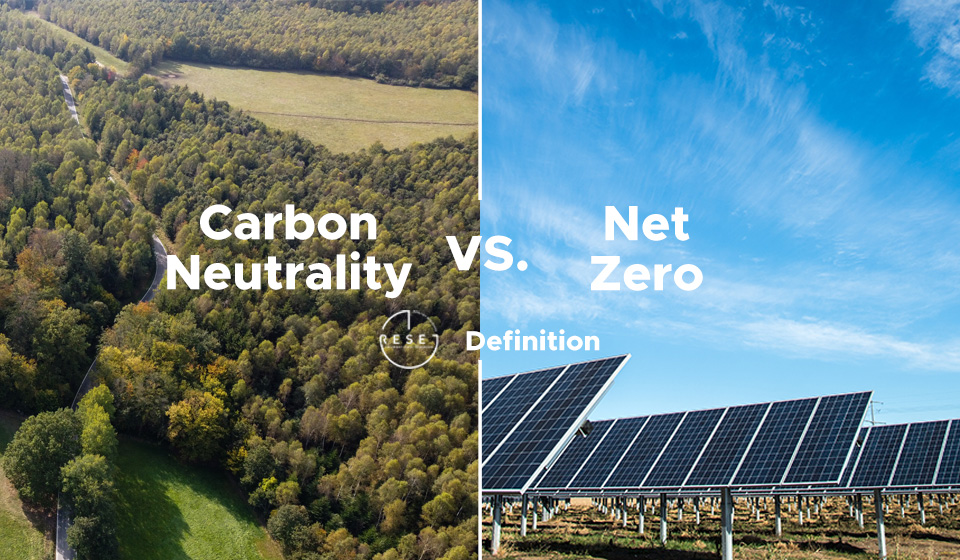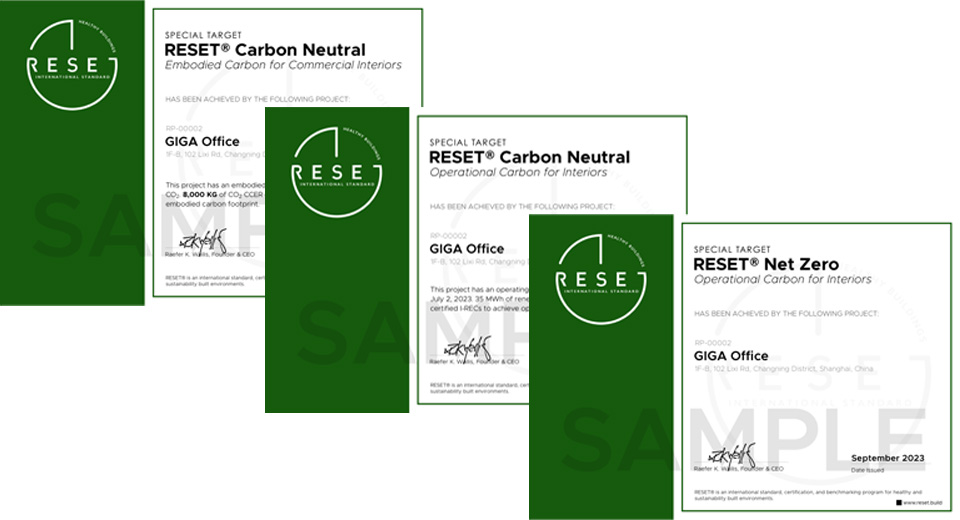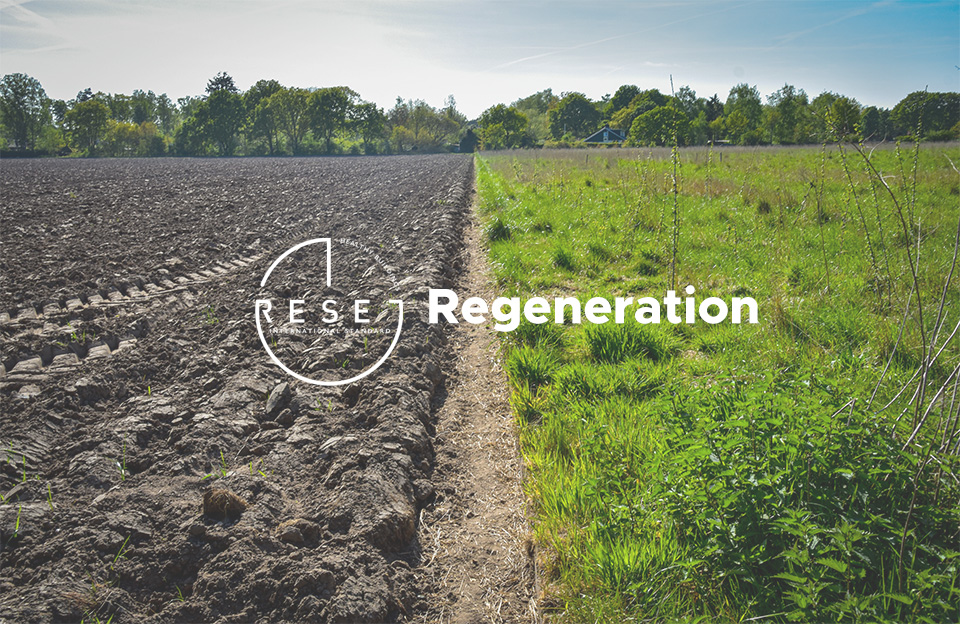Carbon Neutrality vs. Net Zero vs. Zero Carbon

Carbon neutrality is a very hot topic nowadays, with many companies and countries establishing carbon neutrality goals targeting 2030, 2050, and 2060. Aside from carbon neutrality, net zero and zero carbon are terms that are also being used interchangeably, leaving many people puzzled.
In this article, we aim to clear up the confusion and also share RESET's definition of carbon neutrality and net zero emissions.

Photo by Matthias Heyde on Unsplash
What is Carbon Neutrality, Net Zero, and Zero Carbon?
Carbon neutrality is the first term that was introduced and refers to the balancing of the total amount of CO2 generated by an equal amount of CO2 removed from the atmosphere.
Net zero, or net zero emissions, has the same meaning as carbon neutrality without specifying carbon specifically. The term was popularized when first introduced during the Paris Agreement at COP21 in 2015 where the 1.5°C temperature control target was outlined. The term has gradually disseminated globally as part of the agreement and is often used. As the name implies, carbon neutrality has a connotation that is concerned specifically with neutralizing carbon dioxide in the atmosphere. In contrast, net zero means going beyond the removal of just carbon emissions and targeting all GHG (greenhouse gas) emissions in the atmosphere, including methane (CH4), nitrous oxide (N2O), hydrofluorocarbons, etc¹.
Zero carbon is a relatively newer term to state that a product or a service produces zero carbon emissions. Commonly associated with products, it is often mentioned in the context of zero carbon foods or zero carbon buildings.
RESET's Definitions
To remove the potential confusion, RESET proposes making the definitions extremely simple:
- Carbon neutral: achieved with the help of carbon offsets/credits
- Net Zero: achieved without the help of carbon offsets/credits
The above definition provides a clear distinction between the two and is very easy to understand. This definition also makes it easy to apply to both embodied and operating carbon calculations.

Photo by American Public Power Association on Unsplash & Luca J on Unsplash, Edited by Ryan Ni
RESET's definition of Net Zero removes the idea of "offsetting to deal with unavoidable residual greenhouse gas emissions as a last resort"² because the concept of "unavoidable residual greenhouse gas emissions" is too vague and difficult to define.
For zero carbon, this term is misleading because there cannot be a truly zero carbon product or service without setting specific boundaries. An electric car might be considered "zero carbon" during a period of operation, but the manufacturing and the energy to fuel the car might not be. RESET believes that this is a redundant term that can easily be replaced by carbon neutral or net zero.
The RESET Carbon Neutral and Net Zero Certificates
Building off of the definitions above, RESET now has special target certificates for carbon neutrality and net zero for both embodied and operating.

Image Above: Certificates Samples, Copyright @ GIGA
For carbon neutrality, there are two special target certificates available:
- RESET Embodied Carbon Neutral Certificate
- RESET Operating Carbon Neutral Certificate
The RESET Embodied Carbon Neutral Certificate is awarded to projects that are certified under the RESET Embodied Standard and have found and purchased credible carbon offsets to offset their embodied carbon footprint that includes all the carbon emissions generated during the construction of the project (A1-A5).
The RESET Operating Carbon Neutral Certificate is awarded to projects that are accredited under the RESET Energy Standard with continuous energy monitoring consumption and have found and purchased credible carbon offsets to offset their operating carbon footprint for the past year.
For net zero, there is one special target certificate available:
- RESET Operating Net Zero Certificate
The RESET Operating Net Zero Certificate is awarded to projects that are accredited under the RESET Energy Standard with continuous energy monitoring consumption and continuous energy monitoring production from local renewable energy sources, with the amount of renewable energy generated being equal to or larger than the energy consumed.
Note that there is no RESET Embodied Net Zero Certificate available. Due to RESET’s definition of net zero requiring that projects offset all their GHG emissions by using renewable energy sources and without relying on any external carbon offsets or carbon credits. In the future, RESET plans to further enhance the RESET Net Zero Special Target Certificates to encompass water management, waste management, and gas leakage.
An example of a project that has achieved both the RESET Embodied Carbon Neutral Certificate and the RESET Operating Net Zero Certificate is the Brookfield Shanghai Office - Brookfield and the First RESET Operational Net Zero & Embodied Carbon Neutral Office Interior

Image Above: Brookfield Shanghai Office, Copyright @ GIGA
The Role of Carbon Offsets and the Future
Our world is fundamentally carbon-based. Carbon, the element, perpetually cycles in nature and naturally transitions between solid and gas form. As long as the world exists, carbon emissions are inevitable.
The problem is that there is now an imbalance, with too much carbon in gas form, affecting the global climate, which in turn impacts ecosystems globally.

Photo by Etienne Girardet on Unsplash
One way to fight the escalating threat of global warming is the promotion of a low-carbon lifestyle with less consumption. However, less consumption will not resolve our problems. Getting to net zero will also not resolve our problems. Our goal needs to go further to balance the ecosystem. At RESET, we refer to this as "regeneration". The aim is to develop systems based on performance and data that help real estate and beyond not just reach carbon neutral and net-zero levels, but to innovate and improve beyond that to regenerate our global ecosystem.
This is where carbon offsets and carbon credits come in. Carbon offsets and credits have created an impactful way to align ecological, social, and economic targets with market forces and government policies. The issue with carbon offsets and credits is that the source of these offsets and credits are not reliable and do not always provide measurable impact towards regeneration, but are instead used as marketing tools that end up as greenwashing. Carbon offsets and credits are here to stay, but there needs to be more transparency and due diligence for the system to create a sustainable, long-term impact on our effort towards regeneration.

Photo by Rick van der Haar on Unsplash, Edited by Ryan Ni
True sustainability requires balance. Carbon neutrality and net zero are stepping stones towards regeneration and balance. As the "R" in RESET stands for regeneration, RESET will continue to pursue regenerative development with consideration for both sustainability and health.
Sources
"Carbon neutral and net zero - what do they mean?" World Economic Forum, 2022. https://www.weforum.org/agenda/2022/08/carbon-neutral-net-zero-sustainability-climate-change/
"Carbon neutral, net zero and zero emissions: what's the difference?" Laure Legros, 2023. https://www.workforclimate.org/post/whats-the-difference-between-carbon-neutral-net-zero-and-zero-emissions?gclid=EAIaIQobChMIj4v_hLr0gAMVhufICh1P0gBEEAAYASAAEgLcl_D_BwE
About RESET®
RESET® is a data standard, accompanied by a set of assessment tools, created and managed by GIGA to develop actionable, long term strategies towards health and sustainability for the built environment. RESET focuses on creating a structure around data and analytics to generate opportunities for improvement and optimizations by combining the development of continuous monitoring and cloud software to increase the visibility of health and sustainability data in the built environment.
For more information about RESET, please visit: https://www.reset.build/
